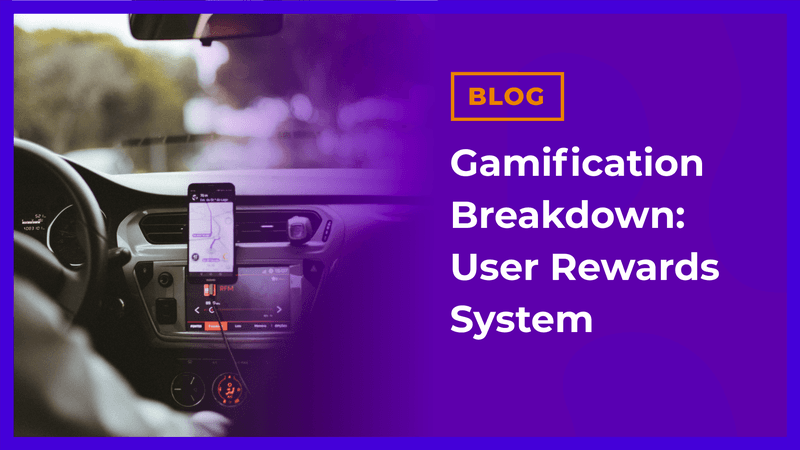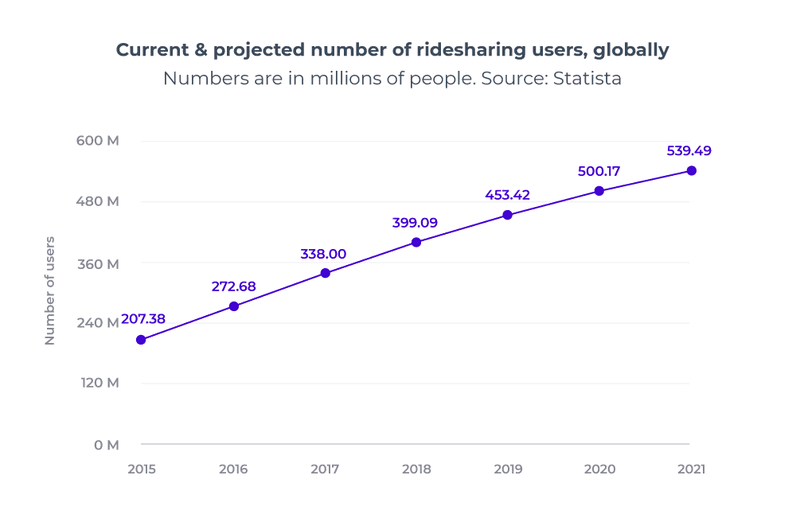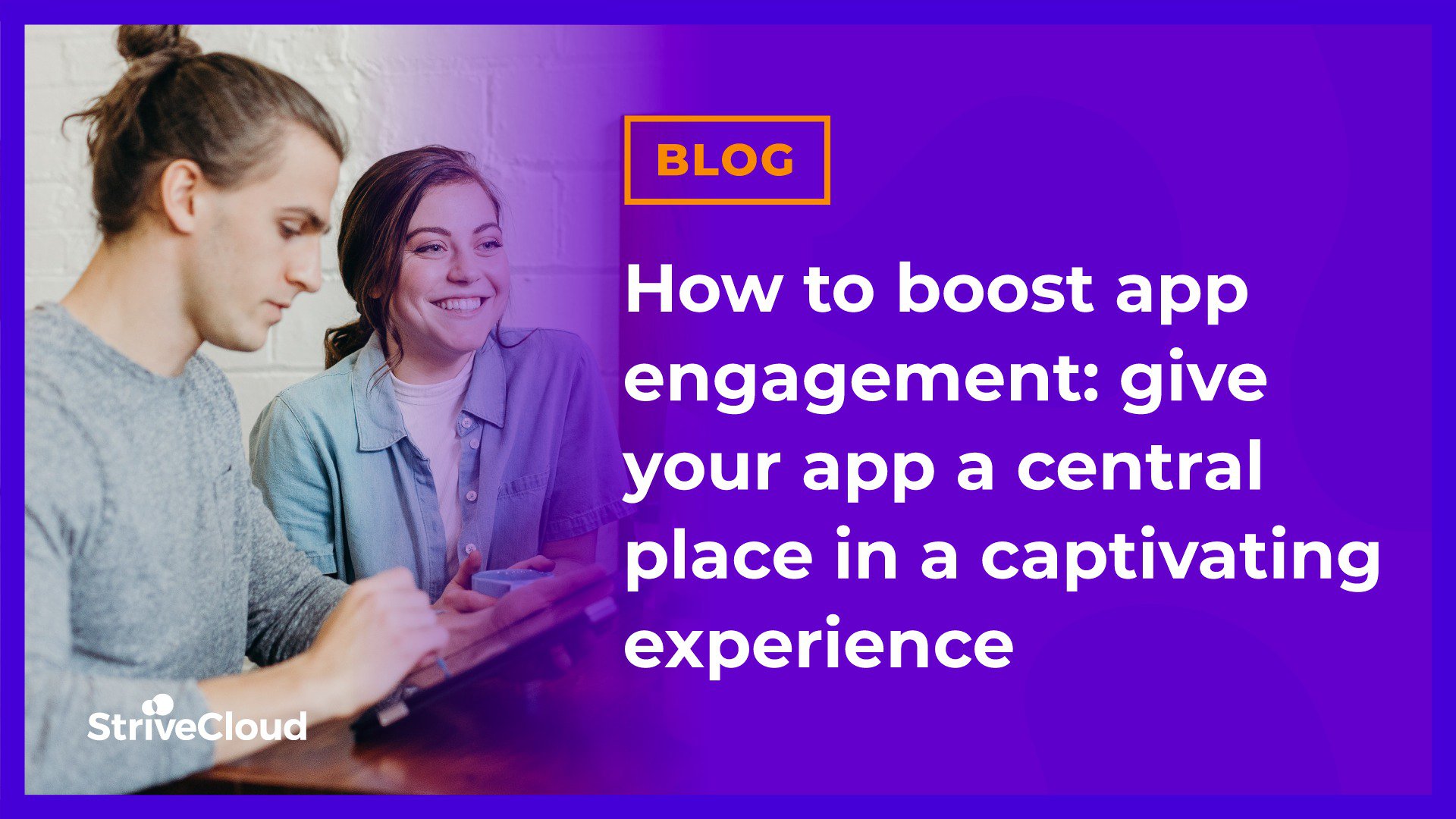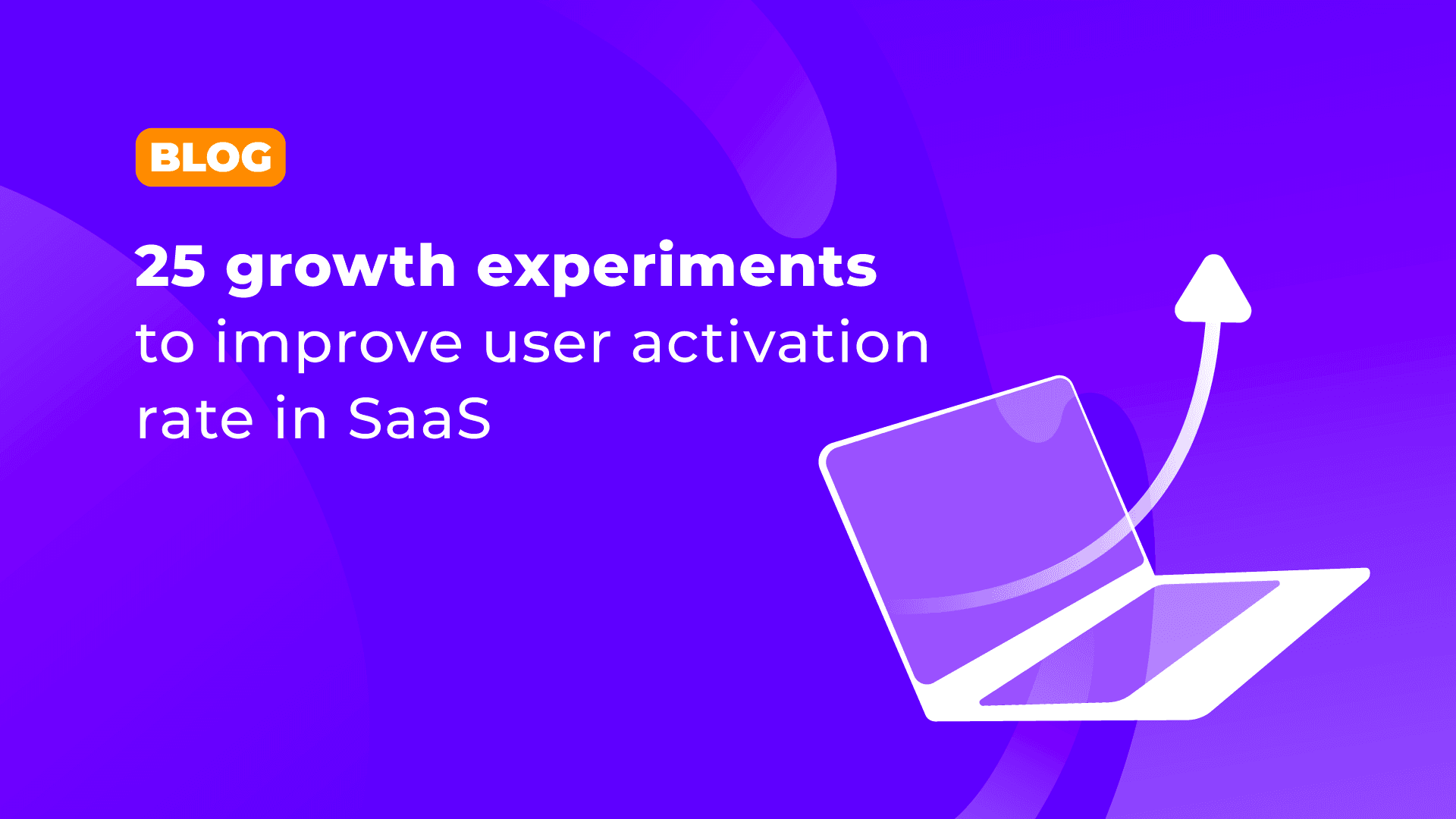

Uber: A great example of how to increase customer loyalty with gamification
Uber: A great example of how to increase customer loyalty with gamification

Uber's app interface provides a clear example of how gamification elements can be integrated into a service-based platform.
The average smartphone owner unlocks their screen 150 times a day! Needless to say, the tremendous amount of attention our mobile asks for can feel overwhelming for some people. As a mobile app, how do you rise above the noise and make yourself heard? Product managers are turning to gamification to solve this issue and increase user retention. In great numbers too, as the adoption of gamification is set to grow by 25% every year!
Gamification is the use of game-like features in a product or service to improve customer engagement and loyalty. Examples of gamification can be a monetary reward system and unlockable badges. As a result of implementing gamification features, early adopter brands are reaping the benefits. A study into Nike Fuel’s gamification found it supercharged customer loyalty and led to clear sales benefits: app users spent up to 3 times more than non-app users!
One sector is taking great advantage of gamification: on-demand mobility. These are companies that provide flexible transport solutions through mobile apps, like Uber. In this article, let’s look at how Uber’s gamification app made them a market leader.
We will cover:
- Key gamification trends and the case for customer loyalty
- Why on-demand mobility needs the power of gamification
- Gamification examples that help Uber improve customer loyalty
- Recap
Key gamification trends and the case for customer loyalty
More and more we see market leaders using gamification to create long-lasting customer value. One of the first gamification examples goes way back to 2006 when Coca-Cola started using features like loyalty points and prizes as part of its My Coke Rewards program. The campaign retained 20 million lifetime members! A sign of how powerful gamification can be.
Another key trend is the changing demographics of consumers. Digital natives, consisting out of millennials (1981-1996) and Gen Z (1996+) will make up 3/4 of the workforce by 2025. In short, that means those with spending money! Given that Millennials were the first generation to grow up with games, it should not be a surprise that studies show millennials respond positively to app gamification. Brands can leverage this power to increase their customer loyalty among this hard-to-reach demographic.
Speaking of customer loyalty, did you know that millennials are the most brand-loyal generation? Despite taking an unliking towards in-your-face marketing such as ads or drip campaigns, over half of millennials say they are extremely loyal to a brand! This affects the on-demand mobility sector as well, especially Uber, where 65% of users are aged under 35.
Why on-demand mobility needs the power of gamification
Today, the way we get from A to B is changing and car ownership is plummeting. As a result, the ridesharing app market is predicted to grow an impressive 20% every year. That means the market will double in just five years! Given this growth, the competition is getting stronger too. Take Lime for instance, whose signature green bikes can be found in most major cities – they only started in 2017.

This graph illustrates the significant growth in on-demand mobility users, highlighting the competitive market Uber operates in.
The on-demand mobility market is no stranger to using gamification features to improve mobile app engagement. Lime, for instance, has a reward system that encourages its customers to pick up bikes across the city. In exchange, users get Lime coins which they can exchange for free rides, discounts, and merchandise.
These are great features to attract new users, but gamification is not one size fits all! You must implement it with your target audience always in mind. Studies show that mature businesses (like Uber) should steer clear of free rides and price cuts – so what is a market leader to do?
Uber shifted its focus to customer loyalty instead of acquisition. Currently, most people request a ride with Uber - it makes up 67% of the ridesharing market. Although, that figure is down from 74% in just four years. Given the rise in competition and alternatives, Uber is using gamification to increase user retention.
Gamification examples that help Uber improve customer loyalty
The Uber app uses gamification features to meet its business goals. In particular, their reward system is tailored to raise user retention. As opposed to Lime, which offers incentives to start using the service such as discounts, the Uber Rewards program aims to incentivize loyalty. The reward system launched in 2018 and includes a tier system that unlocks benefits such as the removal of cancellation fees.

Uber's reward tier system visually communicates player status and unlocks exclusive benefits, driving long-term user loyalty.
A reward system like Uber Rewards helps you turn customers into loyal ambassadors. This is a good strategy! Keep in mind that your top 10% of customers spend almost 3x per transaction than the bottom 90%. Part of the reason this reward system is so effective is a dynamic called constraint. This is when you lock off parts of your app or only reveal things to pro users. Behavioral science shows the fear of missing out is just as motivating as winning!
Want to know more about the ins and outs of gamification? Read our ‘What is Gamification?’ page!
There are other examples of gamification Uber uses to increase its user retention. In order to encourage customers to take part in the reward system, a progress bar shows you how close you are to the next tier.
By visualizing progress, the customer can see how much time and effort they need to invest. Another benefit is that the progress bar provides instant gratification and triggers a natural motivation for progress.

The progress bar is a classic gamification technique that provides users with instant feedback and a clear goal to strive for.
To be sure, intrinsic motivators are crucial for user retention! Intrinsic drivers provide customer motivation based on feelings like enjoyment and happiness. Extrinsic motivation on the other hand is more results-based. While research shows that extrinsic motivators push users through the discovery phase, intrinsic drivers create long-term mobile app engagement.
In conclusion, Uber identified what their business needed, and adapted the app accordingly with the right gamification features. The mobile app focuses on customer loyalty and it has achieved clear results. In just six months, 20 million users signed up to Uber Rewards! The Uber app is an example of how to successfully position your product and target your audience in order to achieve your goal. And it was made possible with gamification!
Want to drive meaningful retention on your app? Try our app gamification solutions!
Recap
Gamification is the use of game-like elements in a product or service to lift user engagement and increase customer loyalty. Gamification features are popular today – Gamification adoption is set to grow by 25% every year!
One sector is taking great advantage of gamification: on-demand mobility. These are companies that provide flexible transport solutions through mobile apps, like Uber.
The rapid growth of gamification is a sign of changing demographics. Digital natives, who will soon make up for 3/4 of the workforce, not only respond positively to app gamification but are also the most brand-loyal generation. These demographics heavily affect Uber, where 65% of users are aged under 35.
Let’s recap the challenges of the sector and how Uber faced up to the challenge:
- The ridesharing app market is predicted to grow an impressive 20% every year.
- Companies like Lime have gone from emerging to competing rapidly.
- Competition has led to a 7% decrease in Uber’s market share.
Given this, how did Uber utilize gamification features to achieve user retention?
- Implemented the Uber Rewards system, to give back to its loyal customers.
- Introduced tiers with perks such as the removal of cancellation fees.
- Developed a progress bar to show how close users are to the next tier.
In response, they received 20 million sign-ups in just six months! And that’s how gamification can be used to turbocharge user retention and customer loyalty.

Learn how StriveCloud can help you implement similar gamification strategies to boost your customer loyalty.
Related Posts

How to boost app engagement: give your app a central place in a captivating experience
If you want app engagement rates up now Gen Z is entering the market, it’s time to enhance your user experience. The StriveCloud team can help you develop a gamified app that will be at the heart of the user's experience.


